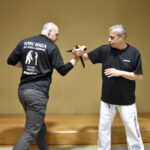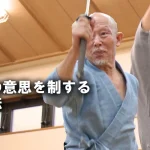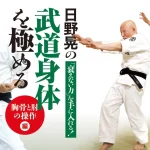Text by Kurabe Makoto Shiseido
Jujutsu’s dissemination in Poland

It was the summer in 1974 when I visited Warsaw Poland for the first time. At that time Poland was controlled by socialism under Soviet Union’s (Russia’s) domination. All the buildings were so old and covered by thick dirty soot. Most of the cars looked so old, as they were produced right after the second world war. I saw sepia-coloured scenery everywhere.
Since then 43 years have past and Warsaw has drastically changed into a modern metropolis with huge shopping malls covered by glass, artificial shaped skyscrapers, etc. I retired two years ago at the age 65 and now I have so much free time that I can visit and stay in my beloved Warsaw often and for longer periods. So, I am now busy teaching the original Japanese Jujutsu of Gyakutedo, both in Japan and Poland.
Speaking of Jujutsu’s dissemination in Poland, it is just same as in the other European countries, with brutal techniques, from the point of a Japanese Jujutsu-ka, called “Jujitsu” are popular here. Such European Jujitsu created by non-Japanese persons consists of the techniques using a simple mixture of Judo, Aikido and Karate, and accordingly has no delicate and sophisticated know-how which should be the essence of Jujutsu. I do despair as one a Jujutsu-ka in such a situation where people cannot learn real Jujutsu that can be called an art of martial arts.
By chance, around 3 years ago I found one Jujutsu school via the internet which is located quite far from Warsaw, in a mountain area near the border between Poland and Slovakia. I noticed that this Jujutsu Dojo has a connection with a Japanese Jujutsu master whose name I knew. I was interested in why that Dojo was located in such a mountain area but not in a big city such as Warsaw, yet could have a connection with Japanese master. Then after 2 years I got a connection with that Japanese master through FaceBook. His name is Master Makoto KOJIMA who organised the KISHIN JUKU and promotes his Aiki Jujutsu. Then I wanted to make that Dojo’s activity as an article in my series of reports titled “Budo report from Europe” which have been posted in the Japanese Budo journal HIDEN. So after 3 years I could finally realize my research and interview with Master KOJIMA’s kind acceptance.
Speaking of Master KOJIMA who organises the KISHIN JUKU, every HIDEM reader may know his name. His head quarters DOJO is located at Akabane Tokyo, and has one domestic branch in Osaka, as well as four overseas branch in Europe, including France, Belgium, U.K. and Poland. He has been putting his big effort into introducing one of the Japanese real traditional Aiki Jujutsu schools in Europe. He is not as old as myself, who already retired from work and whose body has already starting to physically deteriorate with its movement, so we can expect that Master KOJIMA will keep exploring his activity much more in the future. Having the same goal to introduce authentic traditional Japanese Jujutsu to as many Budo-ka in Europe, I could not have made such a remarkable achievement as Master KOJIMA has done due to the limitation of my ability, in my eyes, he looks like a brilliant shining star.
YAMABUSHI DOJO is located in a city named Nowy Targ, which means new market
Now I would like to start introducing the KISHIN JUKU’s Polish branch, YAMABUSHI DOJO. The name of Poland comes from the words “pole” which means wide plain (i.e. it means a country whose territory spreads over a wide plain in north East Europe). But Poland also has mountain areas in the south. There are several mountain ranges in the border district between Slovakia which contains 2000m ‘s high mountains. When we cross over its old capital Krakow, the height increases as we go south and the scenery is changing from plains to mountain areas. YAMABUSHI DOJO is located in a city named Nowy Targ, which means new market, and is located 84 km south of Krakow and takes around 1 hour and 30 minutes by car. It has a population of 34,000, and is a middle sized city in Poland. The DOJO is settled in a public Culture Centre building in the city centre.
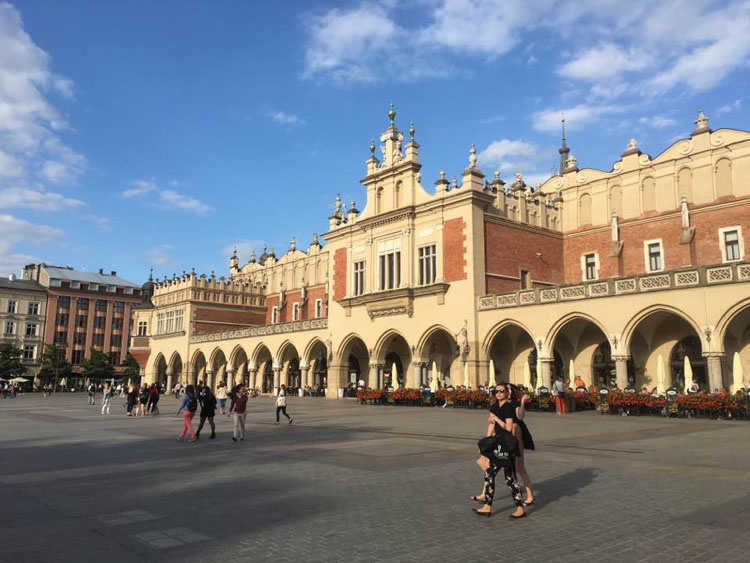 Ancient capital of Krakow in the southern part of Poland, is also known as a stage in the movie “Schindler’s List”.
Ancient capital of Krakow in the southern part of Poland, is also known as a stage in the movie “Schindler’s List”.
 On the way from Krakow to Nowy Targ
On the way from Krakow to Nowy Targ
 Aleksander sensei standing in front of the City Culture Centre building which is located in the city centre
Aleksander sensei standing in front of the City Culture Centre building which is located in the city centre
In the vicinity of Nowy Targ there is a small tourist spot where SPA comes out from the ground called Szczanownica. That small wonderful village is still not well known in Poland. In this scenic village on the top of the mountain there is a spectacular view and I interviewed the two sensei while I was enjoying it.
 The view of the village Szczanownica from the lift
The view of the village Szczanownica from the lift
 The town of Szczanownica, located between the mountains (photographed by professional photographer Mr. Zbigniew)
The town of Szczanownica, located between the mountains (photographed by professional photographer Mr. Zbigniew)
 ancient castle near Nowy Targ
ancient castle near Nowy Targ
Two people who organised YAMABUSHI DOJO
Here I would like to introduce two people who organised this YAMABUSHI DOJO, as Aleksander Kozieł sensei and Sebastian Westrych sensei. In Nowy targ, Aleksander sensei was born in June 1964, and Sebastian sensei in December 1976. Both were raised up there. They are teacher and student, co-organisers of YAMABUSHI DOJO and best friends. They met for the first time when they worked in a security service company. At that time Aleksander sensei was learning Jujutsu, Sebastian sensei was learning SHOTOKAN Karate. Meanwhile Sebastian sensei moved to London and when he came back from the U.K. after 4 years, Aleksander sensei had received 2nd Dan in European Jujutsu and invited Sebastian sensei to his Jujutsu Dojo. At that time Sebastian sensei was convinced that Jujutsu should be an ideal system which compliment Karate to become complete self defence system so he started learn Jujutsu from Aleksander sensei as his Deshi (student). Later Sebastian sensei also opened his own Karate school and began teaching his own students SHOTOKAN Karate, in addition to assisting Aleksander sensei as his co-operator.
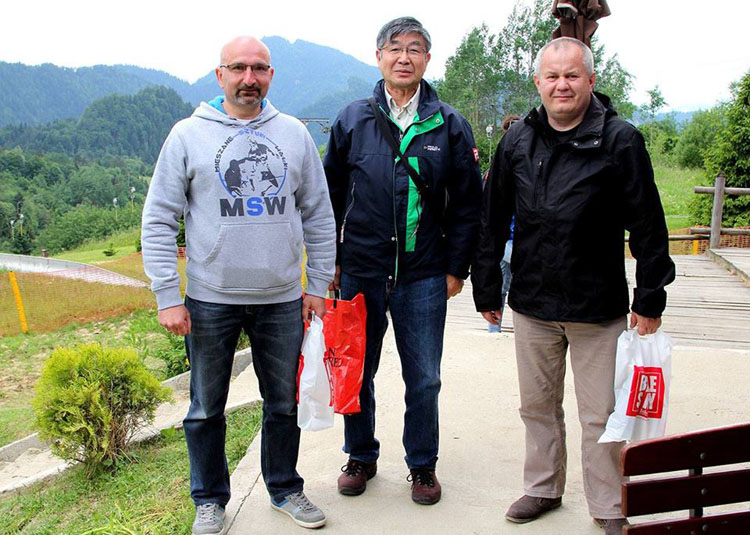 From the left Sebastian sensei, Kurabe and Aleksander sensei in front of a coffee shop where both sensei were interviewed
From the left Sebastian sensei, Kurabe and Aleksander sensei in front of a coffee shop where both sensei were interviewed
 Polish Cavalry Husaria famous for their bravely (from Wikipedia)
Polish Cavalry Husaria famous for their bravely (from Wikipedia)
Aleksander sensei greatly admired Japanese Samurai
Aleksander sensei greatly admired Japanese Samurai whom he saw in Japanese films since an early age. Similar to the Japanese Samurai, in Poland there were cavalry (Husaria) who bravely fought for honor, and their braveness spread over the whole of Europe by defeating the Turkish and Swedish armies whose numbers were several times more than theirs. Alexander sensei says that he saw the same attitude of the Husaria in the Samurai and liked it. When he was 15 years old in 1979, his desire to learn Japanese martial arts (Budo) started, when he was teased in middle school. At that time Alexander sensei read a story about a boy who encountered bullying learning Judo, stopped the bullying, and got to be able to do sports and study well, so he thought that he wanted to do the same thing. At that time in Nowy Targ he started learning KYOKUSHIN Karate because he could find only this one Budo in the town. In 1999, after 20 years passed since he started learning KYOKUSHIN Karate, Alexander sensei encountered European Jujutsu, which never unnecessarily injures the opponent, and he was fascinated by this martial art and then switched from Karate to Jujutsu. Currently, Alexander sensei is ranked 5th Dan in European Jujutsu and is teaching Jujutsu for elementary school students in three neighboring towns, in addition to the headquarters Dojo in Nowy Targ. Currently, his students number 140 people and the most of them are primary school students. In addition to those Dojo, he is teaching fighting techniques at a local high school, specially for young men who wish to become police or army officers. And from September of this year, with the permission of Master KOJIMA, he will also provide the students training in KISHIN JUKU Aiki Jujutsu.
Now, we come to a point where we can explain how YAMABUSHI was used as the name for his Dojo. Aleksander sensei himself thinks that he is a Samurai (Bushi, in other words) living on a mountain, so he named his Dojo “YAMABUSHI”, means Mountain Warrior in Japanese.
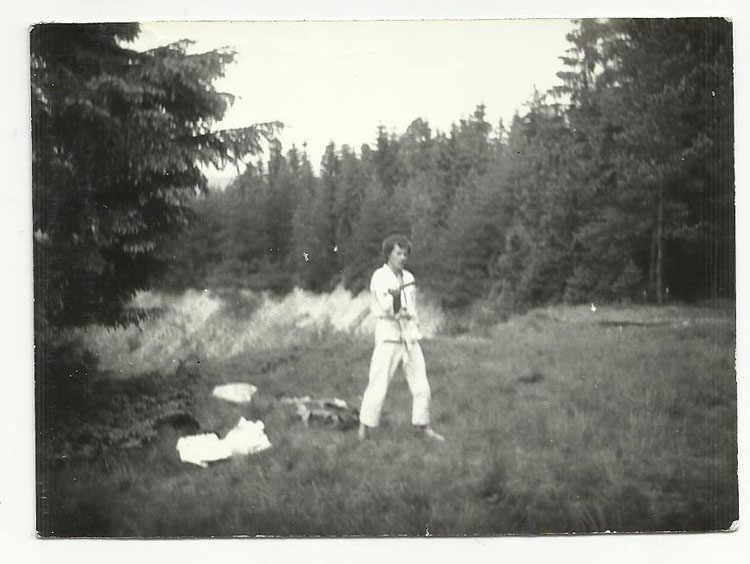 Aleksander sensei at age 15 when he started learning KYOKUSHIN Karate
Aleksander sensei at age 15 when he started learning KYOKUSHIN Karate
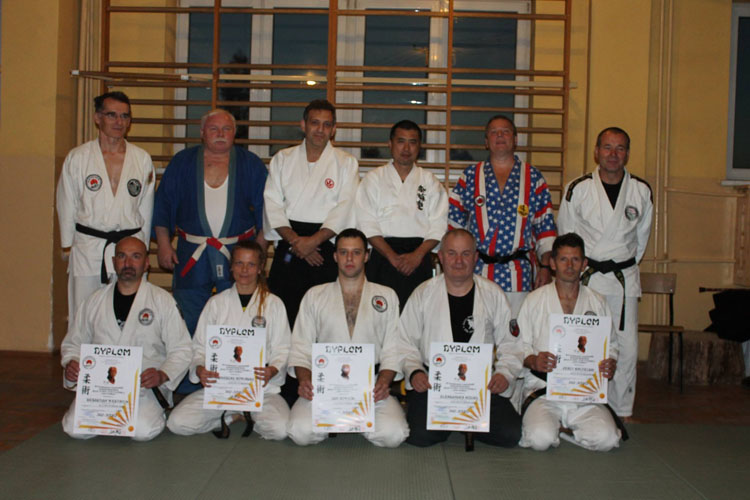 Master KOJIMA attended as an honorary guest for this commemorative photograph when the two sensei were promoted to 5th Dan, and 1st Dan, by the European Jujutsu Federation in Poland.
Master KOJIMA attended as an honorary guest for this commemorative photograph when the two sensei were promoted to 5th Dan, and 1st Dan, by the European Jujutsu Federation in Poland.

 At youth class at YAMABUSHI DOJO
At youth class at YAMABUSHI DOJO
Because there are many beautiful ladies in Poland, girls are also nice looking.
 Sebastian sensei with his son Adrian who is going to be 3 years old soon
Sebastian sensei with his son Adrian who is going to be 3 years old soon






Two groups, boys and girls class, and adult class were combined this time for photo taking
 I showed my Aiki technique “Aiki Kata Otoshi”
I showed my Aiki technique “Aiki Kata Otoshi”
 memoriaru photo with all together
memoriaru photo with all together
From SHOTOKAN Karate-do to Jujutsu
Sebastian sensei began to learn karate seriously since 1995, when he was 19 years old. In 1998, he received an instructor’s license from a SHOTOKAN Karate organization in Poland. After that, he entered the army and studied fighting techniques, and in 2001, after his departing from the army, he left Nowy Targ to study at university and moved to Krakow. He met Aleksander sensei at a security service company in his part time job during his university student days. After living in London for 4 years while earning his master’s degree in history in 2006, he returned to his birthplace in Poland’s Nowy Targ in 2010, and continued SHOTOKAN Karate-do again. At that time Alexander sensei was operating his own Jujutsu Dojo and he started learning Jujutsu seriously from Aleksander sensei.
Speaking of Karate in Poland, Master Hideaki NISHIYAMA and Master Hiroshi SHIRAI of SHOTOKAN visited Poland every year for guidance, and with that effort, SHOTOKAN Karate has become one of the dominate Karate in Poland. Sebastian sensei continued to participate in the training camps where both masters of SHOTOKAN came from Japan, had been instructing and he was granted 4th Dan in SHOTOKAN Karate-do. Sebastian sensei asserts that Karate’s appeal is in “KATA and BUNKAI (decomposition)” and Karate is clearly distinguished from other similar fighting systems in the world.
However, he had learned Karate for many years and had come to feel something was missing. It is a question of whether it is possible to effectively control opponents with less power. He came across Jujutsu and found an answer to this, then started to learn Jujutsu as a beginner at Aleksander sensei’s YAMABUSHI DOJO in parallel with his Karate training, and he has been approved the 1st Dan in European Jujutsu. He is also teaching Karate at his own Karate Dojo while working for a building company, and there are three classes taught five times a week with total 31 students.

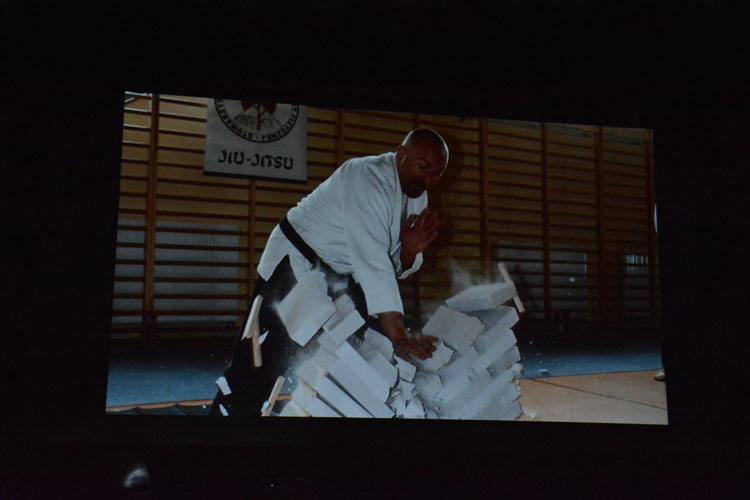 Sebastian sensei’s karate Dojo
Sebastian sensei’s karate Dojo
The person standing on the left end is his friend and a professional photographer Mr. Zbigniew. This time he kindly guided us Szczanownica.
Why Japanese marttial arts?
Both of these two sensei have the same opinion regarding the difference between Japanese martial arts, i.e. Budo, and other fighting systems in the world. Whereas most of the other martial arts remain a way to learn skills to defeat opponents, Japanese martial arts are not limited to merely acquiring such skills, but involve spiritual improvement, in other words, one cannot hope to improve his techniques without improving spiritually. It is regarded as a feature of most Japanese martial arts. This is another common feeling for both of them. When I asked a question about the moment when they were most happy to have learned Japanese martial arts, the same answer came back from each sensei “It was the moment when we met Master KOJIMA. Since that moment it turned out that Jujutsu is not a simple self-defense system, but an art. And we could not have met a person who teaches us such wonderful techniques until now”, they talked with each other.
I am finally going into the point that I am most interested, how they could get a connection with Master KOJIMA. Alexander sensei joins the organization of the so-called European Jujutsu Federation in Poland as one of the leaders which has no direct connection with any Japanese Jujutsu organization. That point I can see from their naming as “Jujitsu” but not Jujutsu. Jujitsu sounds strange for Japanese Budo-ka because it means totally different words. In 2014, a suspect qualification of a fellow leader belonging to that group occurred. He had to confirm the license owned by this fellow which was written in Germany, as it was issued by a German Jujutsu organization. So, Aleksander sensei tried to search for some Jujutsu-ka who understands German. Fortunately there was a man who taught Jujutsu in Germany among his acquaintances, and as soon as Aleksander sensei inquired he got a reply that the German person came to Zakopane in a neighboring town of Nowy Targ while traveling in Poland with a Japanese Jujutsu master, just by chance. They had great luck that those two persons kindly dropped in to Nowy Targ on their way to Zakopane, and that Japanese Jujutsu master gave them a Jujutsu lesson. That Japanese Jujutsu master is Master KOJIMA of the KISHIN JUKU. After that, Master KOJIMA visits Nowy Targ once a year to teach for a few days. And except for that annual concentrated training, they usually communicate with Master KOJIMA via the internet to ask for guidance.
By the way, I would like to introduce an interesting episode about Master KOJIMA that I heard during my interview. One day after practice that lasted from morning till late afternoon was over, Alexander sensei invited Master KOJIMA for a barbecue at home. The way Polish people entertain guests is basically “to serve enough to satisfy the guest so much that they cannot eat it all”, and it would be disrespectful if the dishes of the guests were to be emptied, because the host cannot fill it with more. On the other hand, in the Japanese way, it would be rude to leave anything that was served. Guests must eat all of what they are served. So, it was exactly that night’s barbecue that the two opposite cultures collided. Alexander sensei, who saw Master KOJIMA’s dish empty, either handed in or out, he cooked one after another, with a mild impatience that the plate was always emptied. “I did not imagine that a Japanese could eat such a big meal.” Later he learned about Japanese customs and said, “I feel sorry for Master KOJIMA at that time, because he was forced to endure the stomach becoming so distended, as he was forcibly eating”. I could imagine that seriously troubled situation of Master KOJIMA at that time, and I smiled bitterly.
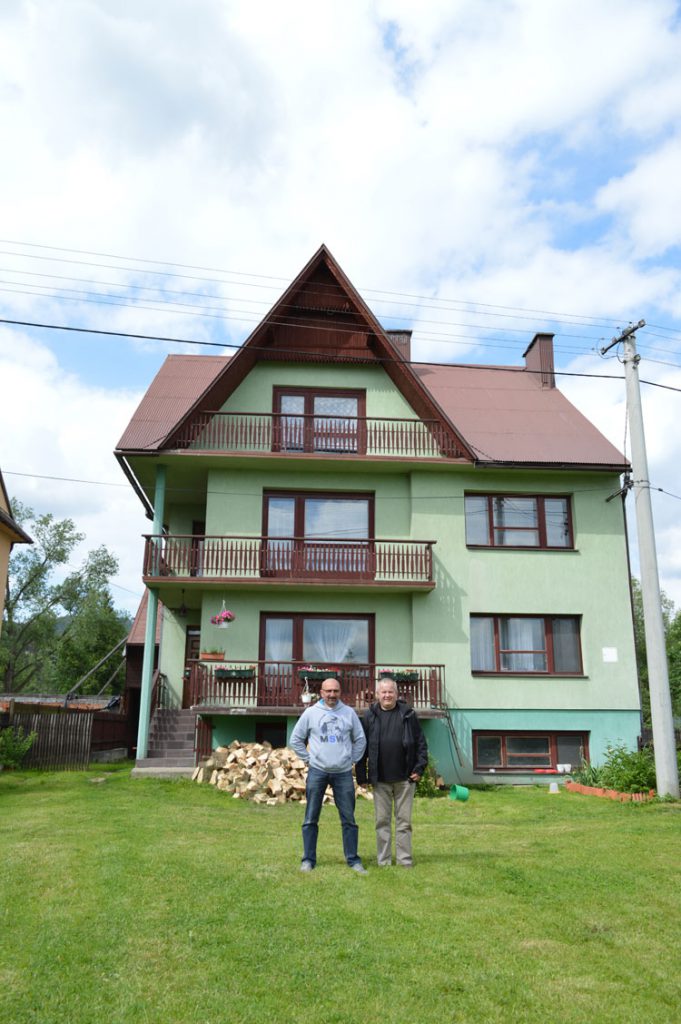 In front of Aleksander sensei’s house where two opposite cultures encountered
In front of Aleksander sensei’s house where two opposite cultures encountered
 He keeps more than 50 chickens in his garden.
He keeps more than 50 chickens in his garden.
further development of his KISHIN JUKU
Three years have passed since Aleksander sensei came to study with Master KOJIMA. Under Master KOJIMA’s instruction, Aleksander sensei is currently authorized as Kyoden-Dairi, and Sebastian sensei as Shoden in KISHIN JUKU.
 When two sensei were approved Kyoden-dairi and Shoden from Master KOJIMA
When two sensei were approved Kyoden-dairi and Shoden from Master KOJIMA
 how Master KOJIMA teaches during his seminar in Poland
how Master KOJIMA teaches during his seminar in Poland
Master KOJIMA visits YAMABUSHI DOJO once a year, all the way from Japan, and gives guidance on implementation, and also holds an open seminar to enlighten Polish Jujutsu people about real Jujutsu. There are only 8 students who are officially members of the KISHIN JUKU learning its Aiki Jujutsu, who are students of the YAMABUSHI DOJO, but the number will increase due to Master KOJIMA’s energetic activities, and Alexander sensei and Sebastian sensei, both of whom will continue to increase steadily with their enthusiastic efforts. Recently, Master KOJIMA expects he will be able to establish a new branch in North America. I hope that as soon as possible, we will realize the situation where many people can learn genuine traditional Japanese Jujutsu–not only in Europe–but also all over the world as a result of the further development of his KISHIN JUKU.
At the end of this article, I would like to thank Master KOJIMA for his kind introduction to be able to realize this wonderful interview. And, I would like to express my hearty gratitude to Alexander sensei and Sebastian sensei for having given me a wonderful welcome at the time of visiting Nowy Targ.
I would also like to express my thanks to Andrew Bryant sensei, a teacher of Iai Jutsu, Jujutsu and my Gyakutedo student in Indianapolis U.S.A., for his big effort to have corrected my Japanese English to formal English.
 Kurabe Makoto Shiseido
Kurabe Makoto Shiseido
Born in 1950. When he was in his 30s, he began learning Gyakute-do Jujutsu, which was derived from Hakkoryu Jujutsu in the 1970s. Just before reaching the age of 40, he moved from Japan to The Netherlands and continued to master and develop Gyakute-do. In October of 2013, after adding the system of Aiki-Jutsu that he developed himself, he transformed Gyakute-do into Aiki-Jujutsu Gyakute-do, and became 2nd Soushi, grand master, of Gyakute-do. After retirement, he left The Netherlands and began promoting Aiki-Jujutsu Gyakute-do both in Japan and in Poland as his main pursuit. He is also teaching his Gyakute-do to Budo fan in the world via corresponding course.

